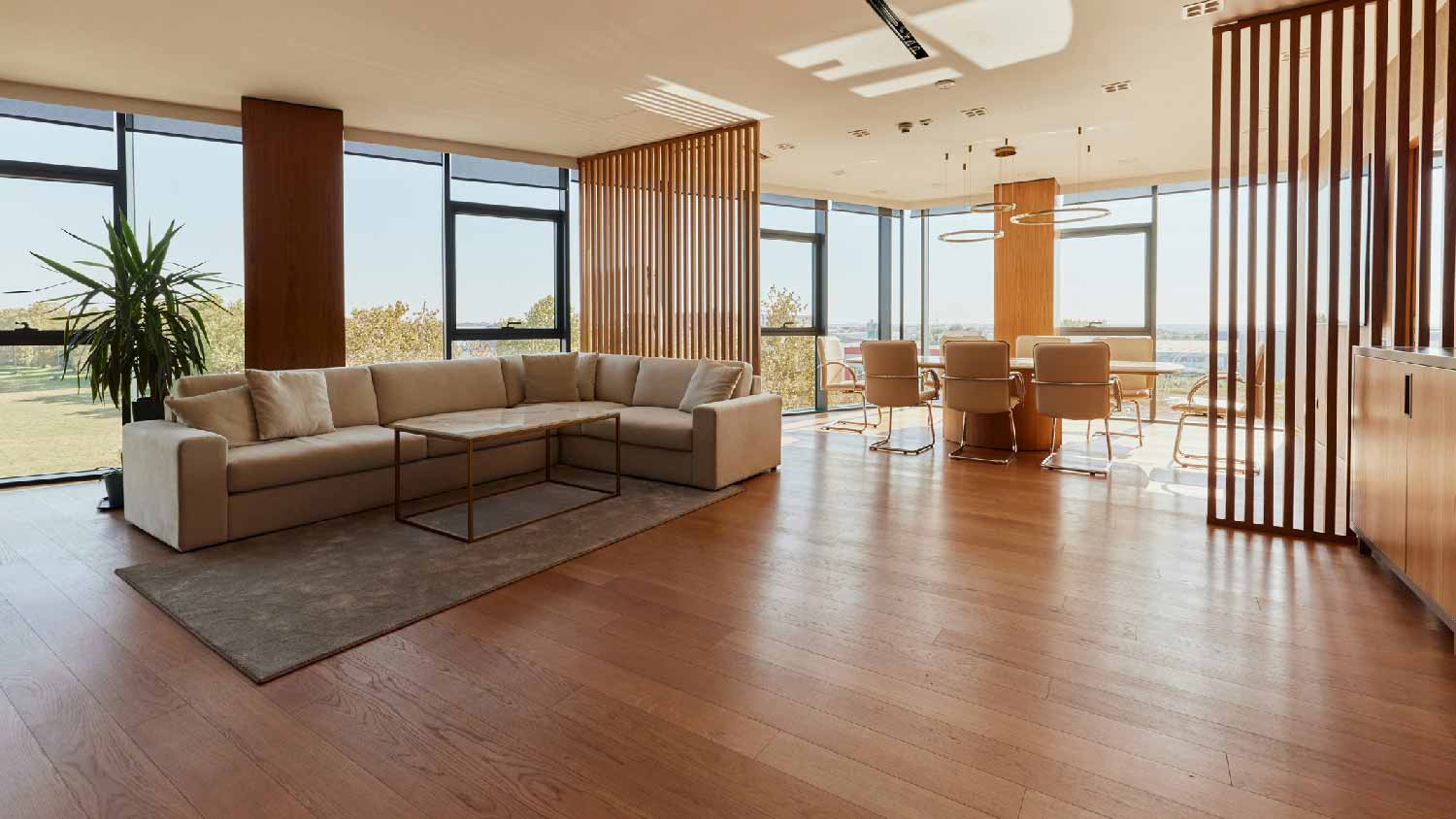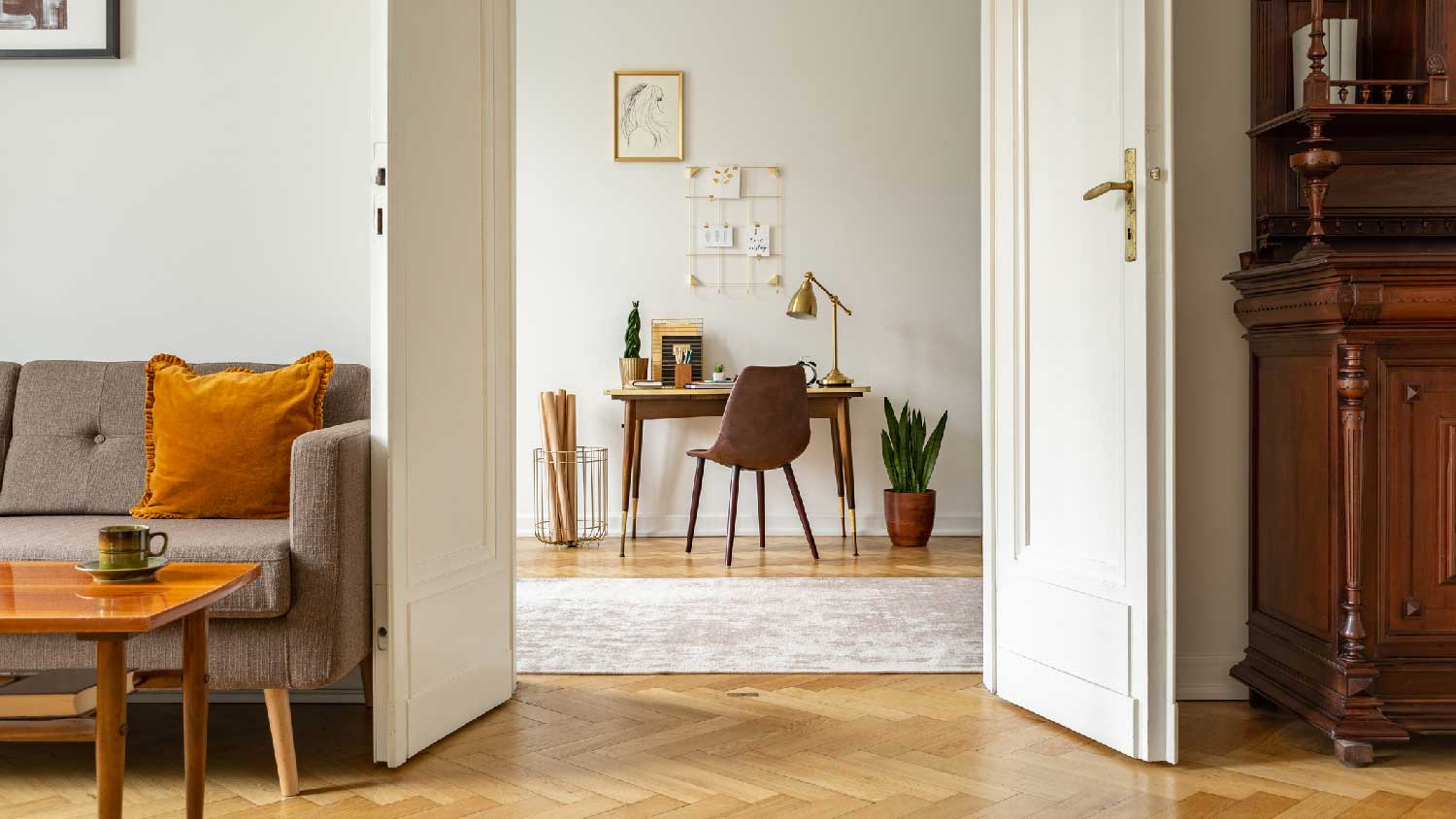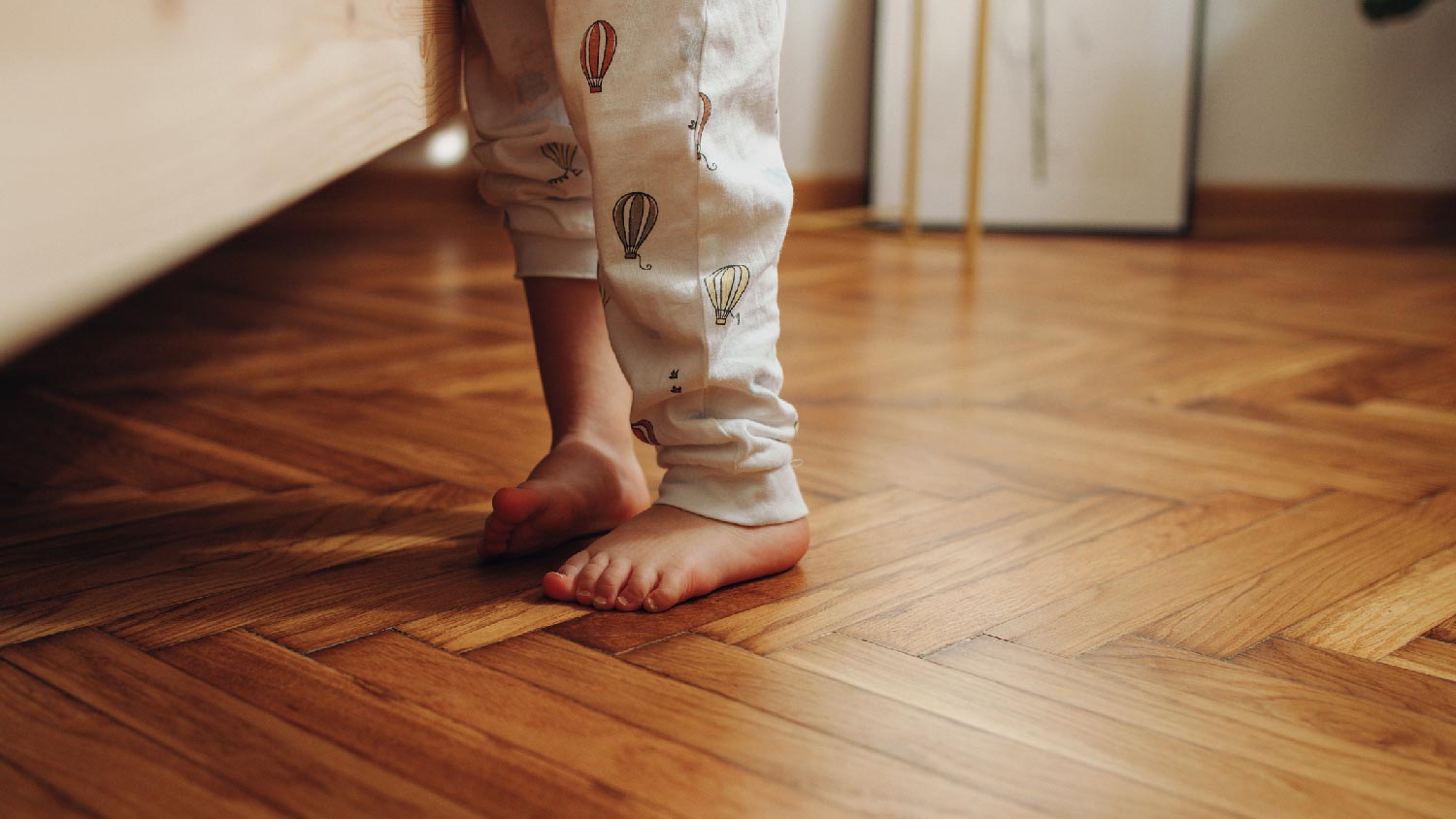
Both materials and labor determine hardwood floor installation costs. This guide breaks down all the prices you need to know before starting your new flooring project.
Dusty floors and wet paint don't mix


No choice is better than another when deciding between painting walls or refinishing floors first.
You can complete painting and refinishing simultaneously, but you must follow a strict process.
Free yourself from the burden of deciding by hiring a remodeling pro to set up the best project timeline.
Which came first: the interior wall paint or the refinished flooring? Renovating a room in your home from top to bottom drums up this age-old question. But, is there only one answer? Weigh the options between whether doing paint or floors first is the way to go as you refresh the rooms in your home.
If you're a work-from-the-top-down type of organizer, painting the ceiling, wall, and trim before tackling the floors may stand out as the most logical choice. In some cases, it does make the most sense, but it truly depends on your specific project.
One of the biggest concerns about refinishing floors first is the risk of dripping paint. Painting first eliminates the need to worry about paint dripping, since any splashes or spills can be easily sanded away during the refinishing process. You don't have to worry about using painter's tape or covering the floor, which can speed up the job. Using paint thinner or other cleaning products to correct painting mistakes poses no risk to the floor’s finish at this stage, cutting concerns about chemical damage to newly finished surfaces.
Fixing painting errors, such as missed spots, uneven coats, or stray brush strokes, costs less and is simpler than repairing floor damage. Floors are expensive to sand, stain, and seal, and even minor nicks or scuffs from ladders, tools, or paint cans can be costly to correct after refinishing.
Matching paint colors to the final look of the floor can be more challenging when painting first. Flooring tones, especially wood stains, can vary significantly once applied, and choosing a wall color without seeing the finished floor may result in a mismatch that affects the overall aesthetic. It can be difficult to paint the baseboards and lower portions of the walls perfectly before the floors are finished. If the final floor height changes slightly or if transition lines between surfaces aren’t clearly defined, the end result could look off.
Freshly painted walls need to be thoroughly protected during the floor refinishing process. Sanding floors, especially DIY floor sanders, creates a significant amount of dust, which can cling to new paint or scratch the surface if not properly shielded. If you choose a lighter paint, like clean eggshell paint walls, cleaning dust and floor stain from the new coat could be tricky.
There’s also a risk of damaging painted baseboards and wall edges when using sanding equipment or applying stains and sealers. This could add to your project time because you'll need to go through touch-ups or repainting. A local interior painting company can take care of any damage caused by the floor and reduce your project timeline.

Choosing to get your floors refinished first can be the right step for some projects, especially if you're managing multiple timelines. Since dust kick-up is a major concern, you can opt to hire a local floor refinishing company that uses a dust-free sanding process. Here's how to compare the benefits and drawbacks of refinishing floors first.
Refinishing floors before painting walls gives you greater flexibility and control over a space's overall look. It’s much easier to choose a paint shade that complements the natural tones and variations of the finished wood rather than trying to match the flooring to a pre-selected wall color. Wood stains can shift in appearance depending on lighting and application, so seeing the final floor first allows for more accurate color coordination. You end up with a more cohesive and intentional design outcome.
Damage to the walls from sanding equipment, like scuffs or small dents, is quick and inexpensive to fix with spackle and paint. More importantly, sanding floors generates a large amount of fine dust, which can compromise freshly painted walls by settling on the surface or becoming embedded in wet paint. By completing the dusty part of the work first, you avoid this issue entirely and ensure that your paint job stays clean and smooth.
Similar to painting first, refinished floors need protection when painting comes second. Once floors are sanded, stained, and sealed, they're vulnerable to paint splatters, drips, and scratches. You'll need to fully cover them with high-quality drop cloths or plastic sheeting to avoid accidents, adding time and effort to the prep work. Even with protection, there's always a risk that a dropped tool, paint can, or ladder leg could damage the freshly finished surface.
If the floors are sanded but not yet sealed, they can absorb paint or primer if anything leaks through the protective layer. This can lead to unsightly stains or discoloration that may be difficult—or even impossible—to fully remove. Painting after the floors are done requires more caution and precision near baseboards and trim to avoid damaging the floor's finish, which can slow down the painting process.
If you're still not sure which project to complete first, you can consider working on both simultaneously. This does require following a strict timeline to protect all surfaces.
Begin by sanding the floors first, and thoroughly clean the space afterward to remove all airborne particles. Once the dust has settled and cleared, apply a single coat of primer or base paint to the walls. Next, refinish the floors by staining and sealing them while protecting the lower portions of the walls with painter’s tape and plastic sheeting to guard against splashes.
After the floor finish has fully cured, return to the walls to apply the final coats of paint, using drop cloths to protect the new flooring. If you’re considering painting your hardwood floors instead of refinishing, you can still do these projects simultaneously.
When you’re ready to tackle an interior painting project, you may worry about the logistics of painting when the room is already furnished—and that concern is even more relevant when pairing it with floor refinishing. According to Angi data, 58% of homeowners are painting rooms that are already furnished and occupied, so pros know how to navigate this situation and protect your belongings.
Roughly 31% of homeowners, by contrast, are looking to paint an empty space. While this does make the project a bit easier, having an occupied space won’t hinder the project. That won’t be the case, of course, if you’re refinishing the floors. You’ll need to move out all the furniture before completing the work.
Now it's time to choose which process you need to follow for your renovation project. Here's what you need to consider as you come to your final decision:
Project-specific factors: The size of the space, overall timeline, and the current condition of the room can influence the best order for your project.
Contractor preferences: Your local remodeling contractor, flooring professionals, and wall painter near you have their own recommended workflow, so it’s wise to consult them.
Drying and curing times: After refinishing hardwood floors, you need to avoid walking on the surface for at least 24 hours, meaning painting would need to wait. If you use oil-based paint on your walls, a second coat can often be applied within hours. Otherwise, you may need to wait 24 hours before recoating, which can delay floor work.
Scheduling and logistics: Tight timelines or limited space will require staggering the work instead of doing it sequentially.
From average costs to expert advice, get all the answers you need to get your job done.

Both materials and labor determine hardwood floor installation costs. This guide breaks down all the prices you need to know before starting your new flooring project.

Hardwood floor repair costs depend on the problem. This guide breaks down common costs based on factors like the type of problem, repair method, and whether you hire a pro or DIY.

Here’s what you should expect to pay when renting an orbital, drum, vibrating, or edging floor sander—as well as where you can rent them and what else to know.

Engineered hardwood floors are an alternative to solid wood, but what if they’re showing wear and tear? We’ll help you figure out whether you can refinish them.

Discover engineered hardwood flooring pros and cons, from style and stability to cost and care. Here’s what you need to know to make the right choice.

Asking your contractor these laminate, stone, and hardwood floor questions before your flooring project starts can help you prepare.